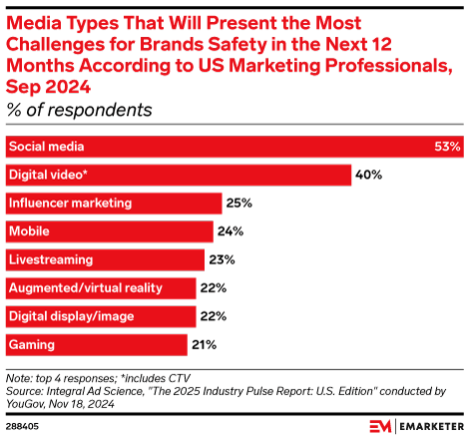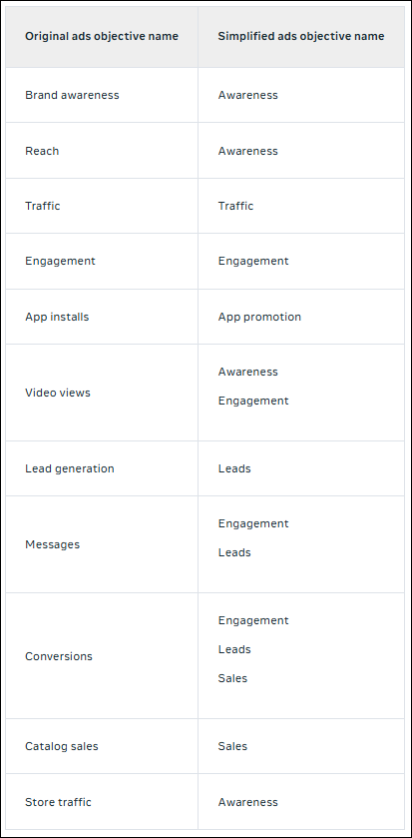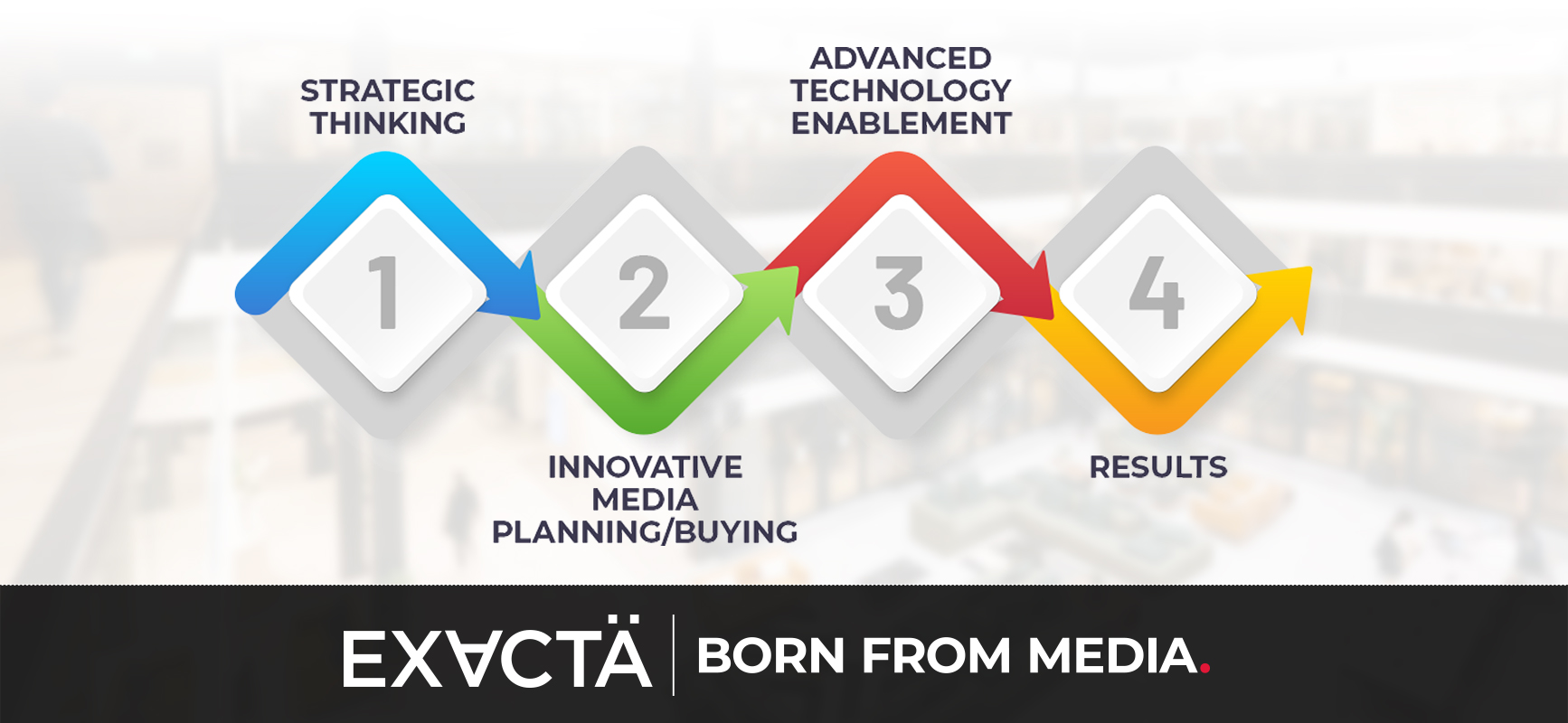

Insights from the EXACTA Media team
Meta has already been busy with changes in 2025, and EXACTA’s marketing team is plugged in to the most recent round of updates. It seems silly to point out that technology is constantly changing, because… no kidding. That being said, some of the new Meta updates are worth noting, particularly as they can impact how the target audience is reached and subsequently ROI.
Here are some of Meta’s newest changes that have been on our radar, what they are, and some pros and cons as it relates to marketing and performance.
Restrictions on detailed targeting exclusions
What is it – This feature allowed marketers to manually exclude certain audiences based on demographics, interests, and behaviors. Meta is restricting access completely or only granting partial access to certain users for this feature, instead leaning on its AI systems to help marketers deliver ads to the right people at the right time.
Pros – This has the potential to boost campaign performance and even include certain target audiences which have the potential to convert who might have otherwise been excluded. In a series of A/B tests, Meta found that the median cost per conversion (CPC) was 22.6% lower when not using detailed targeting exclusions.
Cons – While this performed well in tests, we’re still waiting to see how it performs for all brands over a series of campaigns and initiatives. We support using AI insights when appropriate, but it’s also nice to be able to tweak campaigns with human intelligence. This is an instance where Meta is taking away capability in favor of AI instead of using it to enhance options.
Data-sharing restrictions
What is it – Meta will be restricting the type of data that can be shared with advertisers, focused on health and wellness marketers. The new data-sharing restrictions aim to stop the passing of sensitive information through Meta Business Tools.
Restricted events include “complete registration,” “lead,” and “purchase actions” in shopping cart activity as well as the collection of pixel and conversion API events from websites.
Pros – Obviously protecting user privacy is paramount. When it comes to sensitive health information, that data should be guarded and not passed on to advertisers.
Cons – It’s somewhat vague on what is considered sensitive health information. This could have a deep impact on how anything related to health care, including vitamins, wellness products, some grooming products, etc., are marketed.
Additional insight – eMarketer notes that social media will be the top challenging platform for health care marketers in terms of brand safety. As Meta phases out its fact-checking program for community-based moderation, coupled with data-sharing restrictions, health care brands will have some serious work when it comes to revisiting strategy this year.

Image credit: eMarketer
Changes to ad objectives
What is it – Meta has narrowed down ad objectives in the Meta Ads Manager from 11 to six: sales, leads, engagement, app promotion, traffic, and awareness. Some objectives have been consolidated to streamline the process.

Image credit: Meta
Pros – A simplified structure to make things easier to track. Plus, previous objectives are still available as feature and optimization settings.
Cons – Another place where Meta is reducing functionality, inhibiting targeting capabilities and removing five previously available objectives. Time will tell if this hurts or helps brands.
Focus on AI-driven targeting
What is it – Meta is going all-in on AI when it comes to marketing support. Advantage+ features include:
- Advantage+ Sales (Formerly Shopping) – A fully automated eCommerce solution which allows marketers to simply upload creative and the AI selects targeting, placement, optimizations, and delivery.
- Advantage+ Placements – Marketing budget will be allocated by Meta’s AI and placements will be selected based on where the algorithm thinks they will perform the best.
- Advantage+ Creative – Creative assets can be automatically enhanced. This includes adjusting brightness, generating animations, adding music, and changing image size to fit different placements.
- Advantage+ Audience – Gives marketers an opportunity to input basic demographics and allow the algorithm to manage the remaining targeting decisions.
- Opportunity score – Meta is providing an opportunity score, a 0-100 scale, which assesses campaign set up in relation to what the Advantage+ suite would suggest, and lets marketers know how well the campaign is anticipated to maximize performance.

Image credit: Social Media Today
Pros – Early testing through Meta shared campaigns that utilized the Advantage+ suite marked a 10% lower cost per qualified lead. The system allows for specific budget allocation percentages so that brands can test various AI-powered features. Brands which embraced the opportunity score and applied all recommendations saw a 5% media decrease in cost per result.
Cons – Anytime AI is utilized there is a loss of transparency and control over how decisions are made. Allowing AI to create and adjust creative has the potential to feel less authentic with missed brand messaging and voice. By not being hands-on with targeting, budget, and other aspects of the media placement, there is potential to miss opportunities by blindly following AI recommendations. Marketers utilizing these tools cannot become complacent and need to closely monitor tracking data to ensure top performance.
Advertising Meta-morphosis
As Meta continues to transform how advertising on its platforms takes place, marketing teams must be agile and flexible while integrating the new updates. Where AI is concerned, marketers need to pay special attention that algorithm-generated suggestions deliver results, and continue to improve performance.
Health care and wellness advertisers will have the roughest go this season, as there is some vagueness and confusion around what Meta considers specifically a health product and what types of purchase intent and history should be accessible.
EXACTA’s team always stays on top of the latest updates, ensuring our strategy meets the moment, incorporates new features where appropriate, and tracks the data to maximize performance.
Does your business need an agency partner? Learn how EXACTA MEDIA can help. We specialize in end-to-end media management from strategy through buy and optimization. Connect with our team of experts to learn more.


